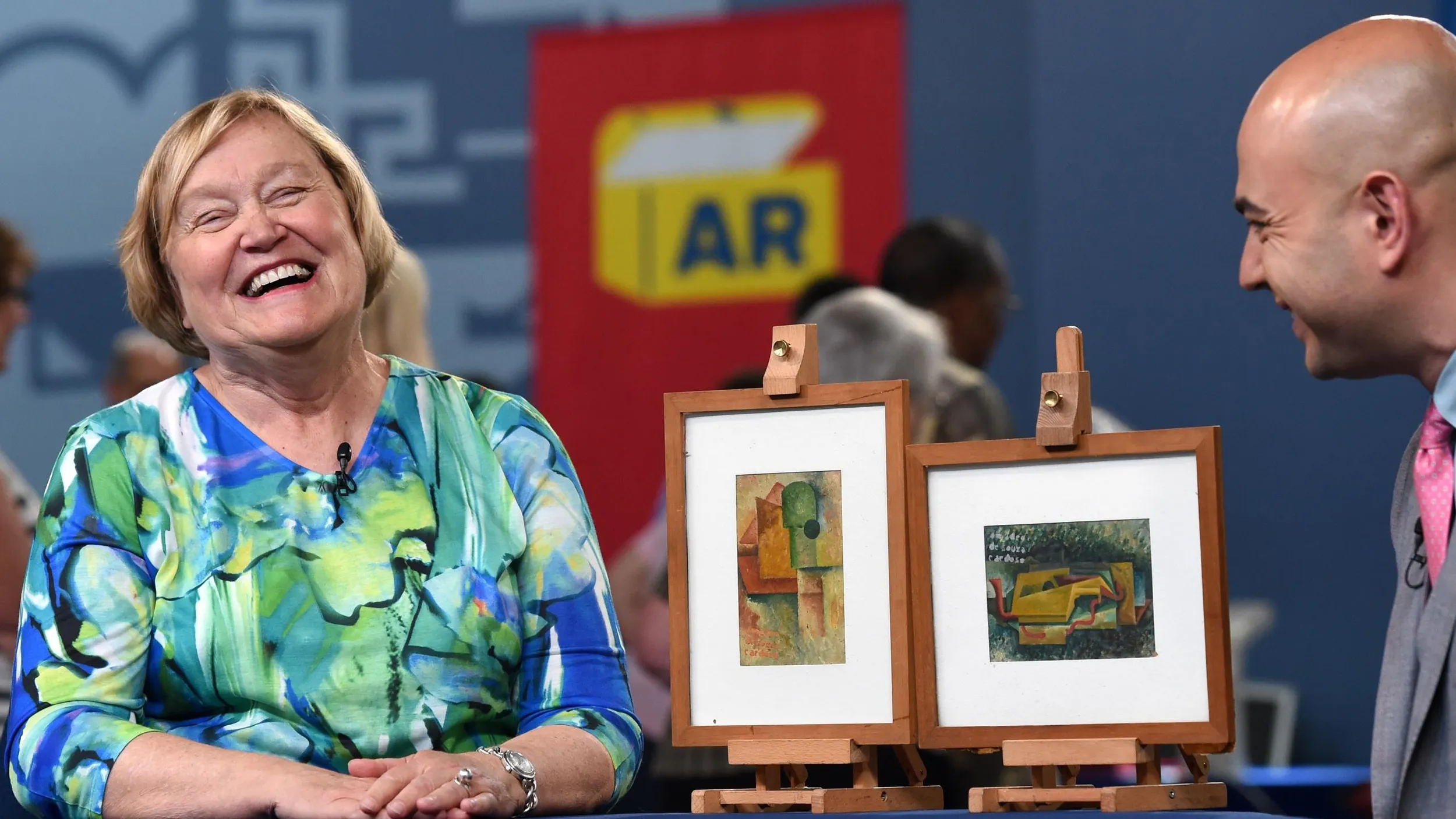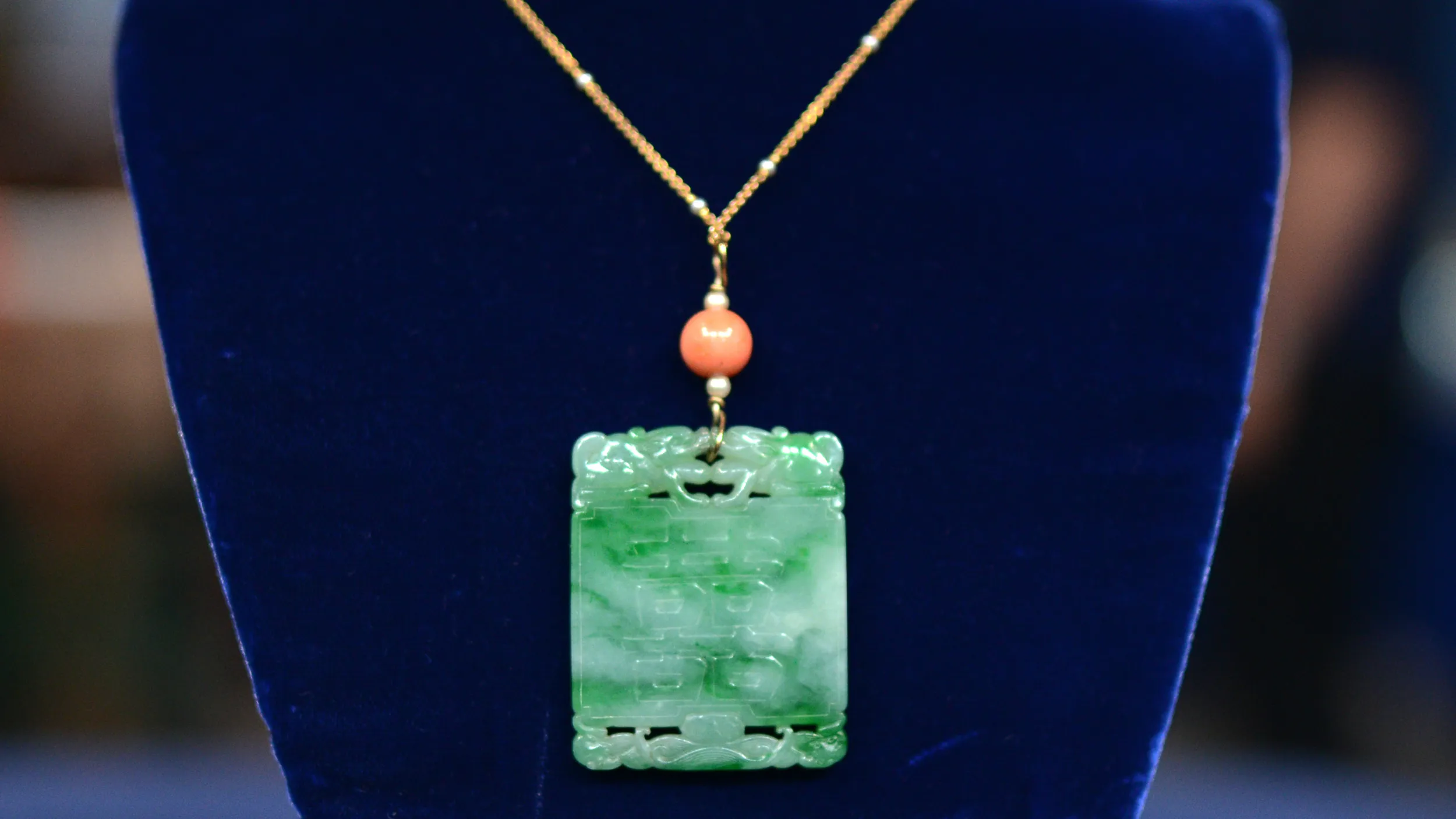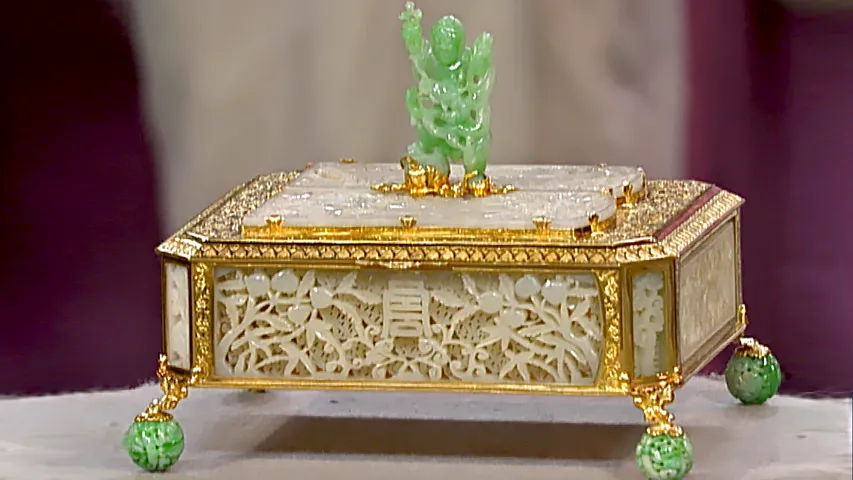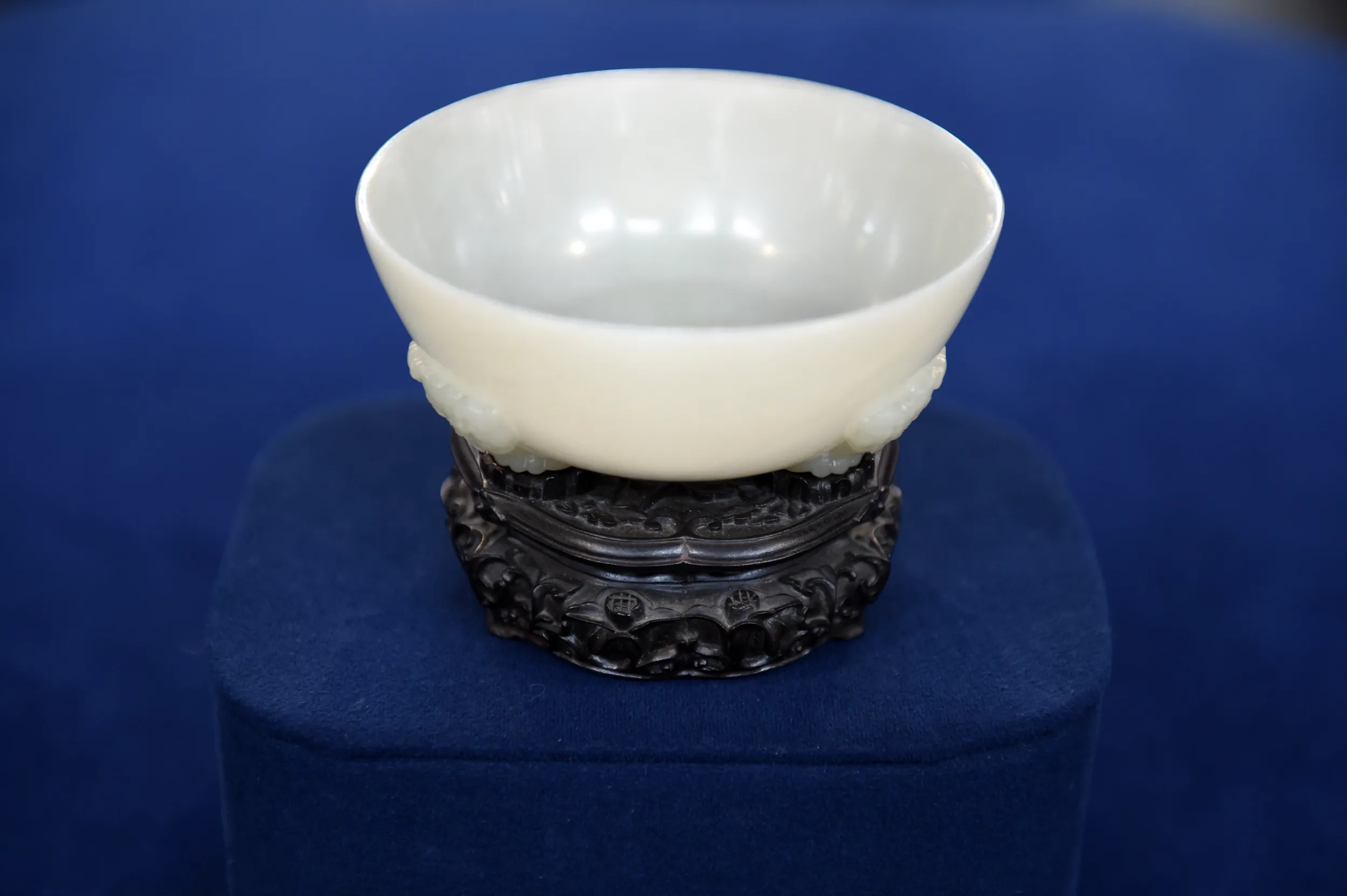GUEST: My dad got them from a family when he was in Formosa. It was in the middle of the '50s. All he told us was that a family that he had stayed with and was friends with gave him that as a parting gift when he came home.
APPRAISER: Do you have any idea how old they are? Did you have any assumptions?
GUEST: Yes, my father had taken them to the museum in San Francisco at one time in a brown bag on the bus. (laughs) And he said that they said it was the Qianlong dynasty, 1735 to 1796. And that was all the Information.
APPRAISER: I see.
GUEST: So...
APPRAISER: Well, although they appear to be in the style of the Qianlong period, during the latter part of the 18th century, the imperial workshops then were highly skilled and continued to develop into the 19th century. That tradition continued actually into the Republic period, between 1911 and 1949. Now, the symbolism of these pieces is really universal in China.
GUEST: Oh.
APPRAISER: These are rams, which are symbols of male power, one of the 12 zodiac figures.
GUEST: Mhmm.
APPRAISER: And they are actually biting what they call Lingzhi fungus here, which are symbols of immortality.
GUEST: Oh!
APPRAISER: So you have power and immortality in these pair of rams.
GUEST: Oh, I thought—
APPRAISER: You can see the fungus on the back.
GUEST: Oh, okay.
APPRAISER: You can also see a sun in swirling clouds here. And the complementary wooden bases pick up this decoration.
GUEST: Right.
APPRAISER: These are white jade with russet skin. And while they were done in the style of pieces which were carved during the Qianlong period, they're actually done, we believe, in the Republic period.
Guest: Oh.
APPRAISER: Which started in 1911, and of course ended with the founding of the People's Republic in 1949. And the fact that your dad acquired these in China in the 1950s firmly places them as a pre-1950s object.
GUEST: Mhm.
APPRAISER: Which in the current international market for Chinese jade is quite important. It provides a provenance and a terminus date for these two pieces.
GUEST: Oh.
APPRIASER: Now, mainland Chinese buyers who love white jade would think that these are highly desirable, even if they are not 18th century.
GUEST: Mhm.
APPRAISER: So what do you think they're worth?
GUEST: (laughs) I don't know. I was told once they were worth about $2,000.
APPRAISER: Well, as Republic period pieces, at auction, they would be worth, or carry a presale estimate, of at least $15,000 to $25,000.
GUEST: Whew! Wow. Geez.
APPRAISER: Now, if in fact they were Qianlong, they would be worth considerably more, maybe $80,000 to $120,000.










